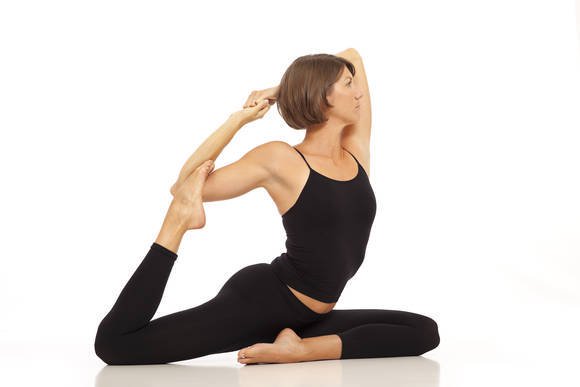So you've signed up for a yoga for beginners class, and you have all the things you need including yoga clothes, the mat, and maybe even gloves and socks. Now, you can't wait to get to the point where you'll see the many benefits of yoga and how it will improve your life. But before you get there, you should first learn how to do yoga properly – meaning, you'll need to perform the many yoga poses the instructor will teach, and make sure you do these yoga positions with the correct physical angles in addition to pace of breathing. To help you get a better idea on what yoga positions to expect, here are some of the important yoga positions you will learn.
Mountain Pose (Tadasana)
Known as the starting pose not for advanced and yoga for beginners students alike, the Tadasana is important because it is one of the basic standing yoga positions where you learn to properly align your body and establish a steady pace of breathing. From the base of your feet, wherein your weight is distributed evenly among all four corners of each foot, to the neutral pelvis with your tailbone tucked in, to the top of your head which is pulled upwards away from your shoulders as if being pulled by a string, Tadasan helps establish the ideal alignment that follows in every yoga pose that will follow.
Corpse Pose (Savasana)
A lot of yoga positions series used in yoga for beginners classes end in the Savasana or Corpse Pose. This pose is named as this because it involves lying very still on the mat, making sure the back is straight, and the shoulders are relaxed. While in this position, you may be asked to bend your knees and lift your pelvis to open the groin. The yogi may also ask you to raise your arms to the ceiling and to lightly roll back and forth to broaden the back ribs while relaxing your shoulder blades.
Cobra Pose (Bhujangasana)
The main benefit of the Cobra Pose is to stretch the back and strengthen the spine. It's known to relieve lower back pain or tension. It's also one of the yoga positions commonly performed as part of the Sun Salutations (which you will surely learn in yoga for beginners classes). The Cobra Pose involves lying face down on the mat and lifting your upper body off the floor by using and engaging your arm muscles.
Child's Pose (Balasana)
Child's Pose is one of the more relaxing yoga positions that's known for its ability to calm the mind and relieve stress. At the same time, it also has physical benefits including stretching the back and leg muscles, strengthening the ankles, and relieving back pain. To do Balasana, sit on the mat with your legs tucked underneath you, so your buttocks are resting on the heels of your feet. Then, bend forward with your arms extended and your forehead touching the ground.
Many yoga positions are considered 'important' and those mentioned above are just 4 of them. In your yoga for beginners class, you can expect to learn more yoga positions that will stretch your muscles and give you more physical flexibility. There are yoga positions that are more physically demanding, but the important thing to remember is to maintain steady breathing and to move according to your pace. If at any point you feel pain or discomfort, don't hesitate to call the attention of your yoga for beginners class instructor.


